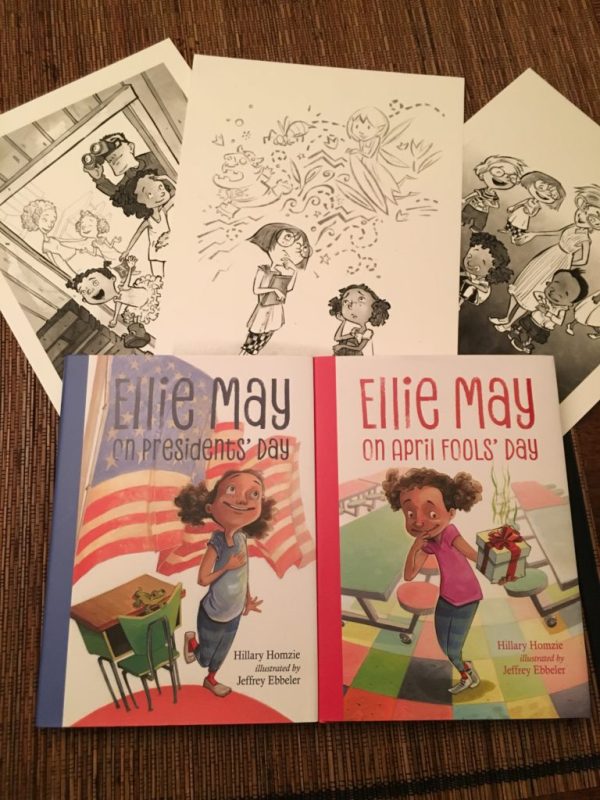September New Releases
It’s September and that means it’s back-to-school time for kids across the country! What will be on those school library shelves? Here are some great new middle grade releases for you and your kids to check out.
How to Be a Good Creature: A Memoir in Thirteen Animals by Sy Montgomery
National Book Award finalist Sy Montgomery reflects on the personalities and quirks of 13 animals—her friends—who have profoundly affected her in this stunning, poetic, and life-affirming memoir featuring illustrations by Rebecca Green.
Understanding someone who belongs to another species can be transformative. No one knows this better than author, naturalist, and adventurer Sy Montgomery. To research her books, Sy has traveled the world and encountered some of the planet’s rarest and most beautiful animals. From tarantulas to tigers, Sy’s life continually intersects with and is informed by the creatures she meets.
This restorative memoir reflects on the personalities and quirks of thirteen animals—Sy’s friends—and the truths revealed by their grace. It also explores vast themes: the otherness and sameness of people and animals; the various ways we learn to love and become empathetic; how we find our passion; how we create our families; coping with loss and despair; gratitude; forgiveness; and most of all, how to be a good creature in the world.
24 Hours in Nowhere by Dusti Bowling
When you come from Nowhere, can you ever really make it anywhere? Author Dusti Bowling (Insignificant Events in the Life of a Cactus) returns to the desert to create a gripping story about friendship, hope, and finding the power we all have within ourselves.
Welcome to Nowhere, Arizona, the least livable town in the United States. For Gus, a bright 13-year-old with dreams of getting out and going to college, life there is made even worse by Bo Taylor, Nowhere’s biggest, baddest bully. When Bo tries to force Gus to eat a dangerously spiny cactus, Rossi Scott, one of the best racers in Nowhere, comes to his rescue—but in return she has to give Bo her prized dirt bike. Determined to buy it back, Gus agrees to go searching for gold in Dead Frenchman Mine, joined by his old friends Jessie Navarro and Matthew Dufort, and Rossi herself. As they hunt for treasure, narrowly surviving everything from cave-ins to mountain lions, they bond over shared stories of how hard life in Nowhere is—and they realize this adventure just may be their way out.
We Rise, We Resist, We Raise Our Voices edited by Wade Hudson and Cheryl Willis Hudson
Fifty of the foremost diverse children’s authors and illustrators–including Jason Reynolds, Jacqueline Woodson, and Kwame Alexander–share answers to the question, “In this divisive world, what shall we tell our children?” in this beautiful, full-color keepsake collection, published in partnership with Just Us Books.
What do we tell our children when the world seems bleak, and prejudice and racism run rampant? With 96 lavishly designed pages of original art and prose, fifty diverse creators lend voice to young activists.
Featuring poems, letters, personal essays, art, and other works from such industry leaders as Jacqueline Woodson (Brown Girl Dreaming), Jason Reynolds (All American Boys), Kwame Alexander (The Crossover), Andrea Pippins (I Love My Hair), Sharon Draper (Out of My Mind), Rita Williams-Garcia (One Crazy Summer), Ellen Oh (cofounder of We Need Diverse Books), and artists Ekua Holmes, Rafael Lopez, James Ransome, Javaka Steptoe, and more, this anthology empowers the nation’s youth to listen, learn, and build a better tomorrow.
The Benefits of Being an Octopus by Ann Braden
Seventh-grader Zoey has her hands full as she takes care of her much younger siblings after school every day while her mom works her shift at the pizza parlor. Not that her mom seems to appreciate it. At least there’s Lenny, her mom’s boyfriend―they all get to live in his nice, clean trailer.
At school, Zoey tries to stay under the radar. Her only friend Fuchsia has her own issues, and since they’re in an entirely different world than the rich kids, it’s best if no one notices them.
Zoey thinks how much easier everything would be if she were an octopus: eight arms to do eight things at once. Incredible camouflage ability and steady, unblinking vision. Powerful protective defenses. Unfortunately, she’s not totally invisible, and one of her teachers forces her to join the debate club. Even though Zoey resists participating, debate ultimately leads her to see things in a new way: her mom’s relationship with Lenny, Fuchsia’s situation, and her own place in this town of people who think they’re better than her. Can Zoey find the courage to speak up, even if it means risking the most stable home she’s ever had?
This moving debut novel explores the cultural divides around class and the gun debate through the eyes of one girl, living on the edges of society, trying to find her way forward.
The Vanderbeekers and the Hidden Garden by Karina Yan Glaser
Return to Harlem’s “wildly entertaining” family in this funny, heartwarming sequel.When catastrophe strikes their beloved upstairs neighbors, the Vanderbeeker children set out to build the best, most magical healing garden in Harlem–in spite of a locked fence, thistles and trash, and the conflicting plans of a wealthy real estate developer.
While Isa is off at sleepaway orchestra camp, Jessie, Oliver, Hyacinth, and Laney are stuck at home in the brownstone with nothing to do but get on one another’s nerves. But when catastrophe strikes their beloved upstairs neighbor, their sleepy summer transforms in an instant as the Vanderbeeker children band together to do what they do best: make a plan. They will create the most magical healing garden in all of Harlem.
In this companion to The Vanderbeekers of 141st Street, experience the warmth of a family and their community as they work together to bring a little more beauty and kindness to the world, one thwarted plan at a time.
The Girl With a Mind for Math: The Story of Raye Montague by Julia Finley Mosca
After touring a German submarine in the early 1940s, young Raye set her sights on becoming an engineer. Little did she know sexism and racial inequality would challenge that dream every step of the way, even keeping her greatest career accomplishment a secret for decades. Through it all, the gifted mathematician persisted―finally gaining her well-deserved title in history: a pioneer who changed the course of ship design forever.
The Girl With a Mind for Math: The Story of Raye Montague is the third book in a riveting educational series about the inspiring lives of amazing scientists. In addition to the illustrated rhyming tale, you’ll find a complete biography, fun facts, a colorful timeline of events, and even a note from Montague herself!
The Beloved World of Sonia Sotomayor by Sonia Sotomayor
In this adaptation for middle graders based on her bestselling adult memoir, My Beloved World, Associate Justice of the Supreme Court Sonia Sotomayor’s extraordinary life inspires.
Sonia Sotomayor, the first Hispanic and third woman appointed to the Supreme Court of the United States, was a young girl when she dared to dream big. Her dream? To become a lawyer and a judge.
As Justice Sotomayor explains, “When I was a child my family was poor and we knew no lawyers or judges and none lived in our neighborhood. I knew nothing about the Supreme Court and how much its work in reinterpreting the Constitution and the laws of the United States affected peoples’ lives. You cannot dream of becoming something you don’t even know about. That has been the most important lesson of my life. You have to learn to dream big dreams.”
Sonia did not let the hardships of her background–which included growing up in the rough housing projects of New York City’s South Bronx, dealing with juvenile diabetes, coping with parents who argued and fought personal demons, and worrying about money–stand in her way. Always, she believed in herself. Her determination, along with guidance from generous mentors and the unwavering love of her extended Puerto Rican family, propelled her ever forward.














